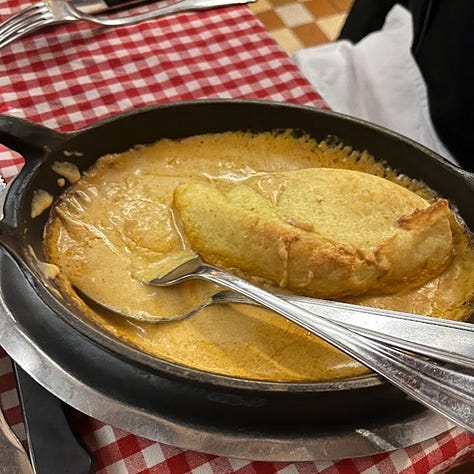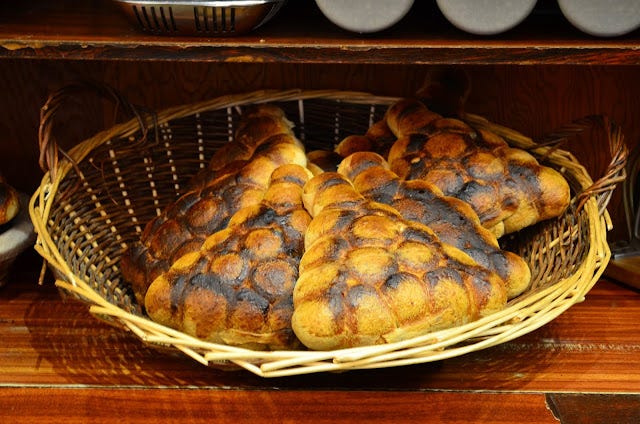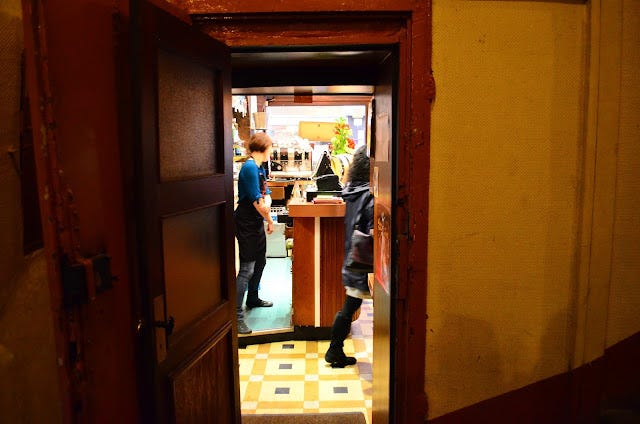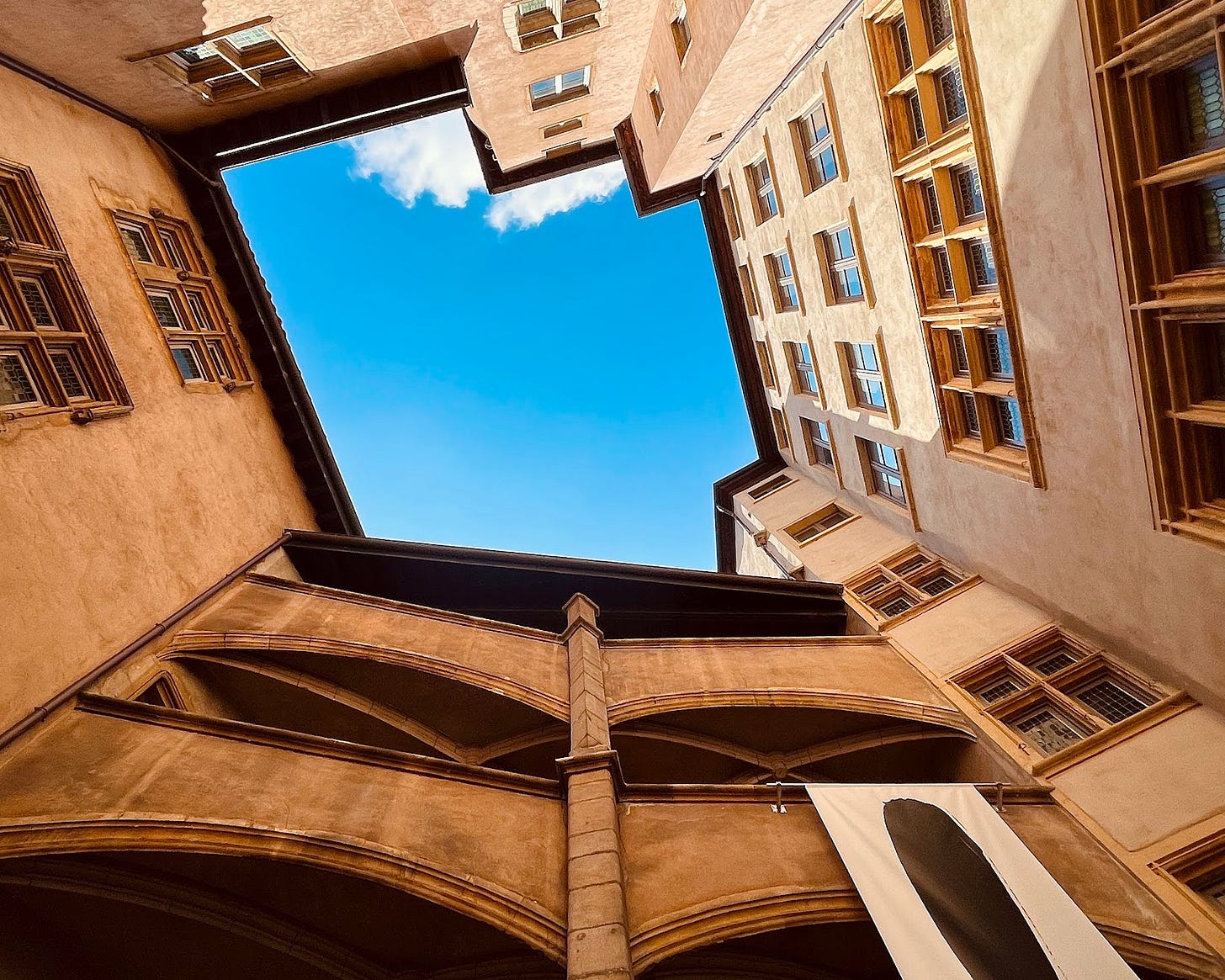It’s no secret that I love fine dining. It might even be an obsession. There’s a certain allure to being whisked away into a different world for a few precious hours, relishing delectable cuisine, refined service and delightful company. Yet, amidst my many gastronomic adventures, one dining experience in France left an indelible mark on me, rivalling even the most esteemed establishments.
Un musée pas comme les autres
Nestled discreetly on a quaint side street in the heart of Lyon lies Le Musée. Accessing this hidden gem is an experience in itself — forget about a front door; instead, navigate yourself through the adjacent, dimly lit traboule (the significance of these secret passages was discussed in my previous post) and enter through a weathered, wooden door hidden at the back.
Stepping inside, you’re immediately transported to another world, un vestige du temps passé (a vestige of times past— like the name The Museum suggests). Any concerns about the perhaps eerie, quiet alley are immediately drowned out by the loud banter of local French diners.
Le musée is the epitome of a Lyonnais bouchon — red-chequered tablecloths, worn moleskin benches, a rustic copper and wood bar, plaster walls adorned with paintings and a 1935 fresco, and wooden chairs surrounding tightly-packed tables. You’re so close to neighbouring diners that you’re essentially forced to eavesdrop on their conversations and mingle with those around you. This is by design.
Une tradition lyonnaise
Bouchons were originally small inns frequented by the canuts, Lyon’s silk workers of the 16th and 17th centuries. During this period Lyon thrived economically and industrially, benefitting from the large demand for luxury silk goods by the French aristocracy and its two rivers facilitating maritime transport. The name supposedly derives from a 16th century expression for the twisted straw bundles that owners would place outside their establishments to indicate that it was a place of nourishment.
Bouchons serve traditional Lyonnais cuisine. Entrées might include Saucisson brioché (pork sausage in brioche), Gâteau de foie de volaille (chicken liver cake) or Terrine (meat loaf). Main courses are hearty, with staples such as Andouillette avec sauce moutarde (strong offal sausage with mustard — not for the faint-hearted), Quenelle de brochet (pike dumpling in lobster sauce), Rognons de veau (veal kidneys), Tablier de sapeur (crumbed beef tripe). Everything is accompanied by simple, delicious side dishes like gratin dauphinois. To finish, options range from more familiar treats like Crème brulée or mousse au chocolat, to Lyon’s signature Tarte aux pralines — a beautiful, bright rose tart made with crunchy, caramelised almonds. An alternative to your sweet finish might be a serving of Cervelle de canuts. Translating to “silk worker’s brain”, perhaps indicating the low opinion Lyon’s affluent had of its weavers, it’s a creamy dip based on fromage blanc (fresh cream cheese) seasoned with chopped herbs, shallots, garlic, salt, pepper, olive oil and vinegar (en effet, tous les ingrédients français essentiels…miam!). In terms of wine, simply choose between white (Mâcon) or red (Côtes du Rhône).



Toutes les routes mènent à Minaire
Luc Minaire is a legend in the Lyonnais community. At the helm of the restaurant for 19 years, the owner and chef of Le Musée is still as charming, full of energy and gregarious as ever. He’ll greet you at the entrance, take you to your table, and then pull up a chair. There’s no written menu here (and certainly no QR codes!) — instead, you’ll spend a couple of delightful minutes with Luc, who could have easily pursued a career in stand-up comedy. He will make suggestions, ensure you feel right at home, and definitely make you laugh. In addition to being the patron des lieux, Luc is also a skilled baker, offering freshly baked bread to all guests. Le Musée doesn’t offer online reservations; you’ll need to call directly. And who handles these reservations? You guessed it — Luc, who records them in a thick, leather-bound book reminiscent of a bygone era.


Luc’s charm doesn’t end there. Towards the end of the meal, he encourages each diner to take a step into the adjacent traboule. What follows is a 45-minute history lesson, brimming with jokes and laughter. From Lyon’s evolution as the capital of the Gaules to industrial centre, press powerhouse, and beating heart of the Résistance. From the love stories of kings to the most daring of wartime heroes — he brings everything to the table. You won’t want the night to end. Hélas, c’est la vie.
During my time in Lyon, I dined in a lot of bouchons. With each enjoyable in its own right, none could compare to Le Musée. They simply don’t have Luc. And while there’s no fancy plating, no tableside guidon (service trolley), and certainly no embroidered hand towels in the bathrooms, Le Musée exudes a jovial, typically French atmosphere. It serves hearty dishes in the spirit of its unforgettable owner. With each visit from friends or family, I made it a priority to get a dinner in at Le Musée. Luc Minaire will forever mark mon esprit convivial — This is a man who lives to run his restaurant.







One day I can imagine a colourful book of your experiences in printed form being enjoyed my many!